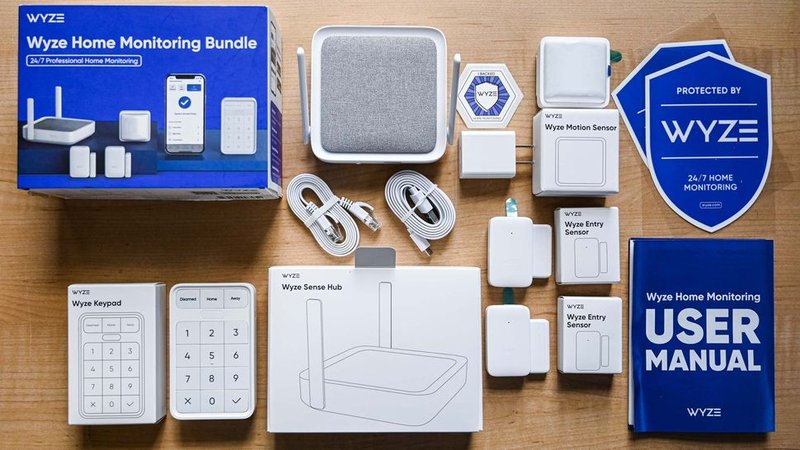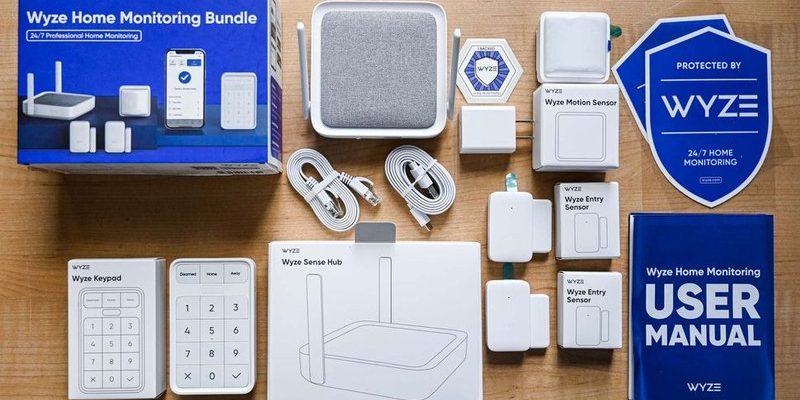
Wyze is known for creating affordable, smart security gadgets that are surprisingly easy to install around your home or office. But even dependable gear can run into hiccups, from odd electrical gremlins to issues with the remote controls or app code. Knowing the ins and outs of the Wyze warranty can save a lot of hassle when things don’t go as planned. Let’s break down what Wyze covers, what they don’t, and how to make the most of their warranty if you ever need it.
Wyze Security System Warranty: The Basics
Let’s start with the big picture. Wyze provides a standard one-year limited warranty on most of their security devices—from indoor and outdoor cameras to sensors and their quirky little keypads. In plain English, this means if your Wyze gear stops working *because of a defect in the materials or how it was made*, Wyze will usually repair it, replace it, or refund you within that first year.
But here’s the thing: this warranty is only for the original purchaser and only if you bought from Wyze directly or one of their authorized retailers. If you scored your Wyze gear secondhand or from a sketchy online deal, you’re probably out of luck. Wyze isn’t responsible for products that were tampered with, re-sold, or messed with by someone other than you. Think of it like a bakery standing behind their own cupcakes, but not the ones someone else tried to frost.
When Wyze talks about a “limited” warranty, they’re being very specific. Wyze only covers certain failures or malfunctions, not every possible thing that could go wrong. For example, damage from a spilled soda or weather extremes isn’t their problem. That’s not them being stingy—it’s pretty much standard for consumer electronics.
What’s Covered by the Wyze Warranty?
Okay, let’s get into the nuts and bolts. The Wyze security systems warranty generally covers the following:
- Defects in materials: Maybe the plastic housing cracks with normal use, or the battery won’t hold a charge even after proper setup. If it’s a problem from the factory, you’re covered.
- Workmanship issues: Let’s say your camera arrives and the night vision doesn’t turn on, or the sync button never worked right from day one. That’s on Wyze.
- Malfunctioning internal components: If the mic won’t pick up sound, the sensor won’t pair, or the main board fizzles out without any rough treatment, that’s warranty territory.
- Replacement or repair (at Wyze’s discretion): Wyze gets to decide if they’ll fix your item, send a new one, or just offer a refund.
Here’s an example: You unbox your new Wyze Cam and, right out of the gate, the lens won’t focus and the app can’t connect or sync it for code pairing. You’ve tried all the obvious troubleshooting—reset, new cables, different Wi-Fi—but still no luck. As long as it’s under a year old, Wyze’s warranty has your back.
Just keep in mind, you’ll usually need to provide proof of purchase and maybe ship the item back for Wyze to take a look (they generally cover return shipping if they approve your claim).
What Isn’t Covered by the Wyze Warranty?
This is the part that trips people up. The Wyze warranty isn’t a magic shield against every possible oops or accident. There’s a whole list of things the warranty doesn’t touch—even if your heart says otherwise. Here are the most common:
- Accidental damage: Drop your Wyze camera while hanging it, spill coffee on the sensor, or let the dog chew the remote? That’s all on you.
- Wear and tear: Just like shoes or car tires, some parts naturally wear out. Don’t expect a free replacement if your batteries or cables bite the dust after heavy use.
- Damage from misuse: Using your Wyze gear somewhere way outside the recommended temperature range? Accidentally try to force a reset or hack the code? That voids the warranty.
- Acts of nature: Floods, fires, tornadoes—Wyze can’t help with these.
- Unauthorized repairs or modifications: If you (or your friend who “knows tech”) try to fix the circuit board yourself, Wyze won’t cover any disasters that follow.
- Third-party accessories: If a non-Wyze power cord fries the camera, or a universal remote won’t pair or sync properly, that’s outside their promise.
Here’s a scenario: Someone resets their Wyze hub using a sketchy online tutorial, and now nothing will pair—then they ask Wyze to replace it. Odds are, Wyze will politely say no.
How to Start a Warranty Claim with Wyze
If you need to activate your Wyze warranty, the process is refreshingly straightforward (especially compared to some tech brands). Here’s how it usually goes:
- Gather your info: Wyze will ask for your order number, a description of the issue (like “sensor won’t sync with app” or “remote not responding to code reset”), and maybe photos or a short video.
- Contact Wyze support: The easiest way is through the Wyze support website or app. Have your device details and troubleshooting steps ready—Wyze likes to know you tried the basics already, like checking the battery or resetting the device.
- Follow their instructions: Sometimes, Wyze will walk you through more troubleshooting, or ask you to send the item back. If approved, they handle shipping—no weird surprises.
- Wait for your fix: Wyze will repair, replace, or refund your product, depending on what’s quickest and best for your situation.
It’s a good idea to hang on to your original packaging (if you can). It makes shipping easier if you ever need to send something back. Patience helps, too. Warranty claims don’t always move at lightning speed, but Wyze is known for being fair if your claim is legit.
Real-Life Problems Covered by the Wyze Warranty
Let me tell you about my neighbor Dave. He’s not the techiest guy, but he loves keeping an eye on his yard with his Wyze Cam. About five months in, the camera stopped connecting, even though his Wi-Fi was fine and he’d reset all the right things. He tried pairing with a new remote and checked every bit of troubleshooting advice Wyze offers online.
Turns out, Dave’s camera had a manufacturing issue in its internal memory—something he couldn’t have caused. He contacted Wyze support, sent over his order details, and followed the support steps right from the app. Within a week, Wyze replaced his camera, no drama.
That’s how the warranty’s supposed to work: It covers you when something goes wrong that isn’t your fault and wasn’t caused by normal wear. If you’ve done everything right and the device still fails, Wyze is there to help.
On the flip side, another friend, Mandy, left her Wyze sensor on a sunny windowsill, where it basically baked for months. When it finally died, Wyze’s warranty didn’t cover it—extreme heat damage is outside their promise. It’s a bummer, but it’s also fair.
Comparing Wyze’s Warranty to Alternatives
You might be wondering how Wyze stacks up against other home security brands. Honestly, their warranty is right in line with most budget-friendly security system makers. Here’s a quick comparison for context:
| Brand | Warranty Length | Typical Coverage |
|---|---|---|
| Wyze | 1 year | Manufacturer defects, faulty parts |
| Ring | 1 year | Manufacturer defects, limited wear |
| Arlo | 1 year | Manufacturer defects, some battery issues |
| SimpliSafe | 1–3 years | Manufacturer defects, select coverage with monitoring |
If you’re looking for a warranty that covers every possible accident or battery failure, you might have to shop in a different price bracket. Some brands offer accidental damage protection (for a fee), but Wyze is pretty clear: their warranty covers manufacturing issues, not user mishaps.
Tips to Make the Most of Your Wyze Warranty
Here’s how you can help yourself if something goes wrong:
- Register your product: Not required, but it can speed things up if you ever need to reference your purchase.
- Document problems quickly: If you notice something weird—like a sensor that won’t sync or a camera with a dead battery—take note of when it started. The sooner you contact Wyze, the easier your claim.
- Don’t try risky fixes: Tempted to open the case or re-code the software yourself? Resist. Anything beyond basic troubleshooting (like reset or re-pairing devices through the app) can void your coverage.
- Save receipts and packaging: It sounds obvious, but you’d be surprised how often people toss their proof of purchase, making claims a headache.
Think about it like insurance: you hope you never need it, but if you do, being prepared makes everything less painful.
Why the Warranty Matters (and When to Consider Add-Ons)
Here’s the honest truth: warranties aren’t glamorous, but they matter. Especially with smart security gear that relies on updates, pairing, and the occasional reset or troubleshooting, it’s reassuring to know you’re backed up if something inside the device just fails.
If you’re the type who wants absolute peace of mind—like protection against accidents, battery replacements, or code glitches caused by wild power surges—consider buying extra coverage. Some retailers or third parties offer accidental damage plans for a fee, but read the fine print. Sometimes, just having a one-year warranty is enough if you take basic care of your Wyze gear.
Think of the Wyze warranty as a safety net for factory errors and weird one-off problems—not a “get out of jail free” card for everything under the sun.
Closing Thoughts: Getting the Most from Your Wyze Security System Warranty
If you just set up your new Wyze camera, hub, or motion sensor, knowing what the warranty covers—and what it doesn’t—can make a big difference. It isn’t a magic answer for accidents, but it’s a solid promise against manufacturing slip-ups, weird hardware defects, or tech that just won’t work from the start.
If you hit a snag, do your best to troubleshoot (code resets, syncing, battery swaps, and so on), then reach out to Wyze support with your details ready. And if you’re ever unsure, ask before you try a risky fix or use a generic remote or charger. Sometimes, the security of a good warranty is just as important as the security of the device itself.
Wyze keeps things pretty simple, but that’s part of their charm. As long as you know the rules, their warranty can take a lot of anxiety out of protecting your home. So, take care of your gadgets—and let Wyze handle the rest when it counts.
